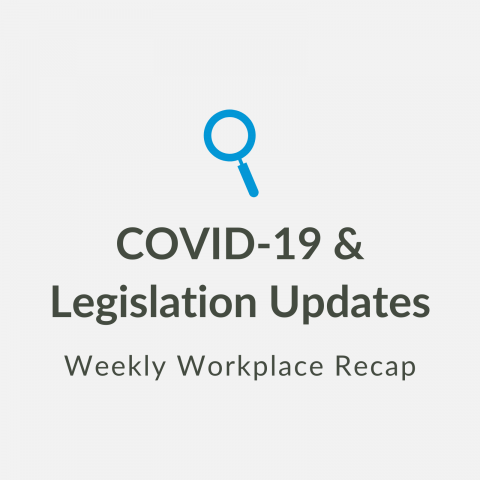COVID-19 & Legislation Updates | Weekly Workplace Recap from Feb 25 to Mar 03, 2022

Below are the key COVID-19 & legislation topics that touch on the workplace from February 25 to March 03, 2022.
Federal
Labour minister set to nudge provinces, territories on paid sick leave
Labour Minister Seamus O'Regan says he plans to put paid sick leave on the agenda for a meeting with his provincial and territorial counterparts to resolve a patchwork system of policies and workplace culture that may dissuade workers from staying home when ill.
In late December, Parliament gave its approval to create 10 days of paid sick leave for federally regulated workers, who make up less than one-tenth of all workers in Canada.
Work on the actual regulations is set to begin in early March with invites to consultations set to go out Friday, just as O'Regan is scheduled to meet with his provincial and territorial counterparts.
Ontario
Ontario set to introduce 'historic' new legislation to give gig workers $15 minimum wage
In introducing the Working for Workers Act, 2022 the Ontario government is looking to establish a minimum wage and other foundational rights for digital platform workers who offer rides or deliver food and other items for companies such as Uber, Door Dash and Instacart.
The government’s proposals would enshrine rights and protections for digital platform workers that include:
- Earning at least the general minimum wage for time worked.
- The right to keep their tips along with regular pay periods.
- The right to information and clarity around algorithms including:
- How pay is calculated; and
- How and why a worker might be penalized in the allocation of work.
- Written notice if they are being removed from the platform and why.
- The right to resolve their work-related disputes in Ontario.
- Protection from reprisal should they seek to assert their rights.
Ontario lifts most COVID-19 restrictions, mask mandates continue
The following changes to public health and workplace safety measures are in effect as of March 1, 2022.
- Capacity limits have been lifted in all indoor public settings.
- Proof of vaccination requirements have been lifted.
- Businesses and organizations may choose to require proof of vaccination upon entry.
- Other protective measures, such as mask/face covering requirements and passive screening of patrons remain in place.
- Businesses and organizations that are open must continue to have safety plans in place.
For the full list of measures in effect, see O. Reg. 364/20.
Alberta
Alberta drops almost all public health restrictions effective March 1
The government of Alberta is a leader in lifting the majority of public health measures as the province moves into the second phase of reopening.
Now in effect:
- Remaining provincial school requirements (including cohorting) are removed.
- Screening prior to youth activities is no longer required.
- Capacity limits are lifted for all venues.
- Limits on social gatherings are removed.
- The provincial mask mandate is lifted in most settings. However, masking will still be required in the following high-risk settings: on public transit, at Alberta Health Services-operated and contracted facilities and all continuing care settings.
- Municipal bylaws may continue to be in effect.
- Albertans may wish to consider individual risk factors and choose to wear masks in other public indoor settings.
- Restrictions on interactive activities, liquor service and operating hours are lifted.
- Mandatory work-from-home requirement is removed.
British Columbia
COVID-19 restrictions remain, but could be lifted by spring break
B.C. is maintaining COVID-19 restrictions currently in place. However, provincial health officer Dr. Bonnie Henry suggested it's possible that some measures may be removed as respiratory season ends, then be brought back in the winter months, though she did not give specific details on what that would look like.


